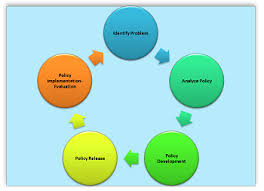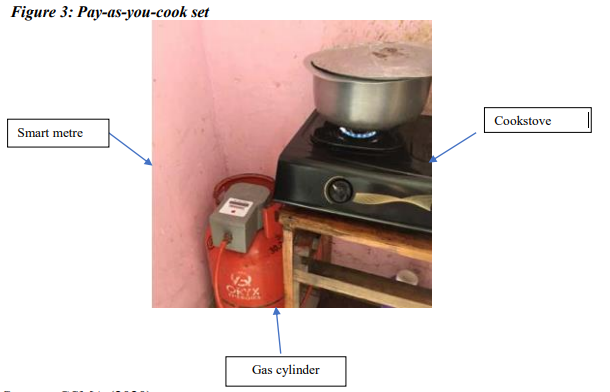Author Guidelines
LANGUAGE
The journal publishes papers that have been written in the British English Language. Authors are reminded to proofread their documents to increase the chance of their papers being accepted by JPL.
ETHICS
JPL understands that publication of scholarly materials requires people involved in the process to adhere to academic standards. JPL is committed to adhere to research ethics including but not limited to the following;
- Plagiarism – Presenting a paper, words, or ideas of someone else pretending that their yours
- Simultaneous submission - Submitting a paper that has been published or is under consideration for publication in another journal
- Fabrication-Making up data or results
- Falsification-Manipulating data or results to misrepresent the findings
- Citation manipulation – Excessive self-citation or coercive citation to increase impact factor or number of citations an author has
- Ghost Authorship – Excluding someone from the list of authors who has a significant contribution in the paper
- Gift (Honorary) authorship – Including a person who has no any meaningful contribution in a paper
COPYRIGHT
All authors of articles published in JPL retain copyright on their articles, except for any third-party images and other materials added by JPL, which are subject to copyright of their respective owners. Anyone is allowed to copy, distribute, and make use of the published content for non-commercial purposes with proper citation.
QUALITY CONTROL
JPL is committed to ensure that articles published by the journal are of high quality. To ensure this, the journal accepts papers that have significant contributions to the existing body of knowledge. Once papers are submitted, the Chief Editor and other journal editors will make preliminary assessments to ensure that papers are written as per the journal’s guidelines. The process will also ensure that papers do not exceed 15% similar index as checked by Turnitin plagiarism checker software. If the editorial team finds that a paper does not meet this criterion it will be sent back to the author (s). Another reason that can lead to such a decision is having significant grammatical and typing errors. Once the editorial team is satisfied papers are sent to a minimum of two (2) reviewers that are experts in the area that the paper submitted is in. JPL uses a double-anonymous system of review to ensure that papers are assessed fairly.
AUTHORSHIP
All authors who have contribution in the paper must be included in a paper in order of their contribution starting with the principal author. In a situation where a submitted paper is a result of a thesis, dissertation, term paper or any student’s work, a student must be the principal author.
PLAGIARISM
The journal does not tolerate any form of plagiarism. Authors are expected to submit their own work and properly cite ideas of other people’s work. While understanding that similarity index doesn’t measure plagiarism, the journal will not initiate a peer review process for a paper with more than 15% similarity index as checked by Turnitin Plagiarism software in quest to promote originality.
LICENSING STATEMENT
JPL is licensed under a Creative Commons Attribution-Noncommercial 4.0 International License.
OPEN ACCESS POLICY
JPL uses an open access policy to ensure easy access to published papers
AUTHOR CHARGES
The journal does not charge processing nor publication fee.
SUBMISSION GUIDELINES
Formatting style
Manuscripts submitted must be written in British English and adhere to APA Style Guide (7th Edition). Authors must format their manuscripts in 12- point Arial narrow, single spaced. Manuscripts must be between 5,000- and 8,000-words including references and tables. Margins of 1 inch must be applied on all four sides of the document.
Manuscripts Sections
The manuscript must contain the following sections:
Title Page
- The title must be concise and informative while correctly presenting what has been written in the paper.
- The title should be formatted in a 16-point font size.
- Full names of the authors and their affiliations should be indicated in the title page. The corresponding author must be identified and his/her email address indicated. Authors’ details, their affiliations and contact should be written in 12- point font size
Abstract
This part provides a concise summary of your study. Make sure you capture all the relevant information presented by your study. Your abstract should present the purpose of your study, research methodology that includes research philosophy, design, study area, data collection methods, sample and sampling procedures and techniques. Data analysis procedures should also be clearly indicated. Include your key research findings, conclusion, recommendations, practical and police implications of your study. Remember to use simple and concise language. Your abstract should be between 150 and 250 words. Do not cite nor provide detailed information. Author must indicate 4 to 6 key words that correctly represent the study.
MAIN TEXT
The main text should contain the following sections:
INTRODUCTION
This part provides the background of a study. Authors are expected to state the research problem and offer its significance. The introduction section should be brief (not more than 2 pages) yet clearly communicating the purpose of the study. This section should also explain the contribution of the study to the existing body of knowledge. It is also important to justify the importance of the study to the readers. Authors are reminded that there is a specific section for literature review so they should avoid using this section for that purpose. This does not mean that authors should not make reference to the existing literature.
LITERATURE REVIEW
In the literature review authors are expected to provide a clear analysis of the relevant existing research. A theoretical foundation of your study should also be clearly presented. Authors are reminded that this section is not for listing different studies and their findings rather an analysis is expected. This analysis should involve comparisons, differences and identification of research gaps and how the study is going to address them. Authors are reminded to ensure there are proposer citations by following APA guidelines. This section should provide logical flow that leads to research questions or hypotheses
Subsections of the Literature Review
Subsections in this section and in the rest of your article should not be numbered rather be bold with title cases in black color.
METHODS
In this section, authors are expected to describe their research philosophy, design, study area, sample and sampling techniques and data collection methods. A description on how data was analysed is also expected. It is important to ensure there is clarity so that the study can be easily replicated. All the methodological choices in this section should be justified. Authors are reminded to indicate ethical considerations.
RESULTS
Provide your findings clearly and concisely. The section should be divided into subsections to enhance clear understanding of the results. It is important to use tables, graphs and figures where necessary. Authors are reminded to avoid discussing their results in this section; rather focusing on reporting and interpreting them.
TABLES
Your tables should be titled, numbered and presented in APA format.
DISCUSSION
Authors are expected to make a critical analysis and discussion of their findings in relation to the existing literature. Authors should discuss how their findings support or contradict theories and empirical evidence present in the existing body of knowledge. It is important to offer significance of the findings and any unexpected results. Discussion on how the results contribute to the body of existing knowledge is expected and required.
CONCLUSION
Authors should provide conclusion (s) based on key findings of your study. Authors are reminded to avoid introducing new or irrelevant information in this section.
RECOMMENDATIONS
Authors should provide relevant practical and/or theoretical recommendations to various stakeholders such as authors, policymakers, practitioners, etc. The recommendations should be based on the research findings.
Policy and Practical Implications
Explanations on how your findings can potentially inform policies, business practices, or industry applications has to be presented here. It is important to ensure the implications are clear and relevant to practitioners and/or policy makers.
Limitations of the Study
Authors have to acknowledge any constraints or weaknesses of their study. These weaknesses may be related to scope of the study, sample size, methodological limitations, etc. Authors should offer suggestions on how these limitations might be addressed in future research.
Areas for Future Research
Authors should propose potential areas for further investigation based on the findings and limitations of their study. It is important to explain how future research could expand their work.
Authors’ Contribution
Each author’s role in the research should be clearly indicated. These roles include, but not limited to, conceptualisation, data collection, analysis, manuscript writing, etc.
REFERENCES
Authors should ensure all the references follow the APA guidelines. Only sources cited in the paper should be included here. Authors are reminded to double-check formatting, accuracy, and consistency.
Referencing style
All references should follow the APA 7th Edition Guide.












